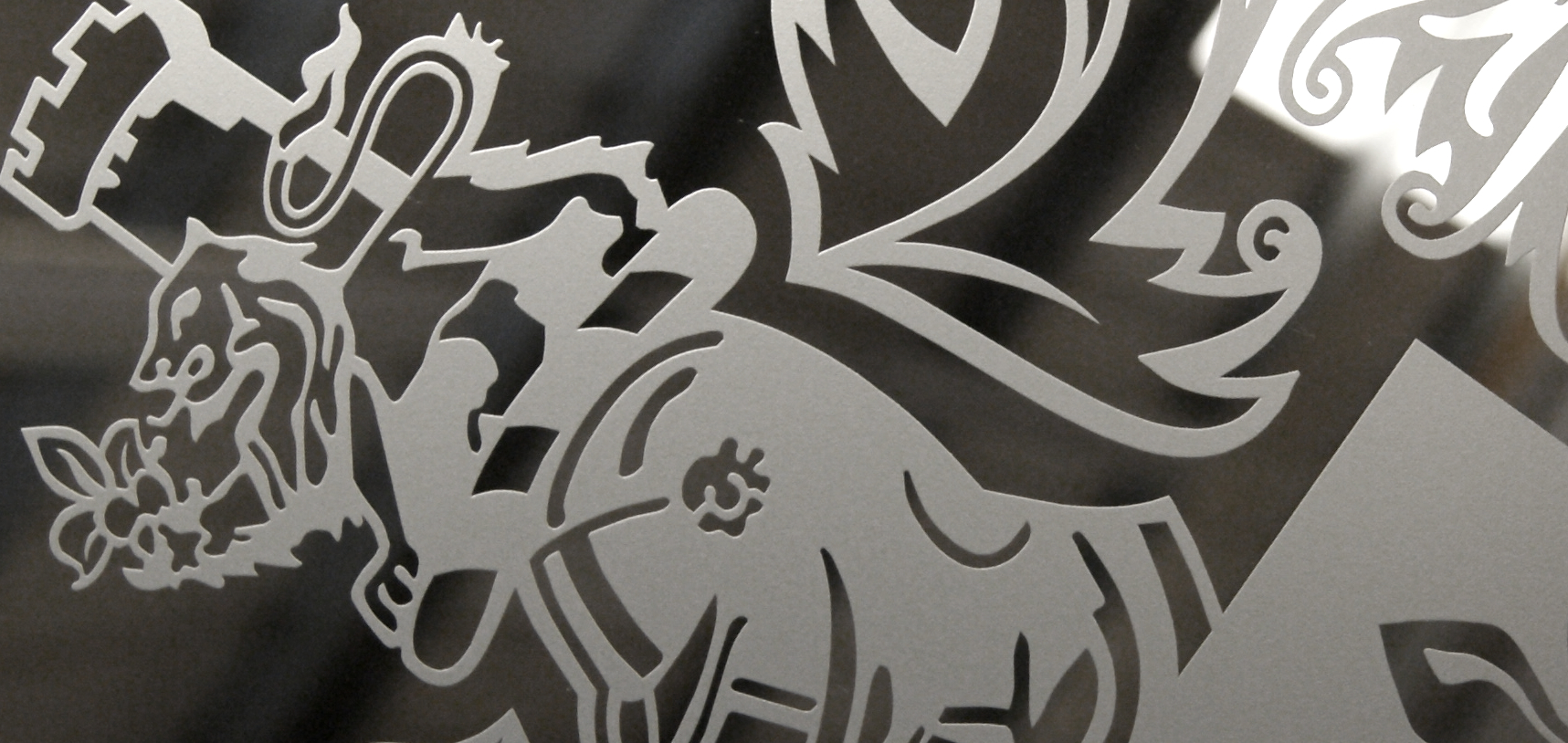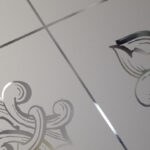
Sandblasted Glass vs Acid Etched Glass
You’ve decided you want to introduce etched glass into your home, but now you have a decision to make. Should you go for Sandblasted Etched Glass or Acid Etched Glass? In this article, we’ll explore the two production processes and explain why we think Sandblasted Glass is the the best choice.
1. Light Transmission
Sandblasted etched glass emerges as the frontrunner when it comes to light transmission. Unlike acid etched glass, the sandblasting process introduces a textured surface that scatters light in an artistic and nuanced manner. This not only contributes to a softer and more visually dynamic ambiance but it allows for more light to pass through the panel into the home.
2. Design choice
Both sandblasting and acid etching techniques allow for intricate detailing, bold patterns, and nuanced textures. Sandblasting however does boast a wider variety of designs to choose from. This is due to it’s precision and intricate detailing allowing for different sandblast depth and even gradients. Another benefit for sandblasting is designs can be easily customized to suit a clients requirements or taste. This is due to differences in the masking process. Sandblasting only requires a vinyl mask, whereas acid etching sometimes requires a metal mask which takes significantly longer to produce. This adaptability with designs allows sandblasting to create made to measure panels for your window or door. It also allows us to offer a wide range of etched house names and numbers with varying fonts and borders.
3. Health and Safety
In terms of health and safety considerations, sandblasted etched glass holds an advantage over acid etched glass. The sandblasting process employs fine sand particles to create the frosted finish, this produces fewer chemical byproducts than acid etching. This makes sandblasted glass a more environmentally friendly and health-conscious product. The abrasive nature of sandblasting may pose respiratory risks during the manufacturing process. These risks however are negated by ensuring the sandblasting takes place in a sealed chamber away from workers. Once production is finished, the fitted glass poses no respiratory risk to the homeowner. In contrast, acid etched glass employs the use of chemicals, some of these chemicals may present health and safety challenges during both the application and maintenance phases. Proper ventilation, protective gear, and adherence to safety guidelines are crucial when working with acid etched glass to mitigate potential health risks associated with chemical exposure. Ultimately, the choice between sandblasted and acid etched glass should not only consider aesthetic considerations but also health and safety concerns, with proper precautions taken throughout the glass’s lifecycle.
4. Maintenance
In terms of maintenance, acid etched glass naturally shows finger smudges less thanks to its bumpy texture, this makes it more of a low maintenance option. While sandblasted etched glass is more prone to fingerprints, we apply a protective coating on all single glazed panels we produce. This coating keeps finger smudges a surface level nuisance that can easily be cleaned. It does this by stopping grease from sinking deep into the etching. On double glazed units we produce, the etched face of the decorative panel is locked inside the unit so it is 100% protected from finger smudges.
Conclusion
Overall we think sandblasted etched glass is the choice to make for a variety of reasons. With better light transmission, design variety and health and safety credentials, it was the clear winner for us when deciding how we wanted to produce our etched glass. You can view a wide variety of designs in our gallery.
